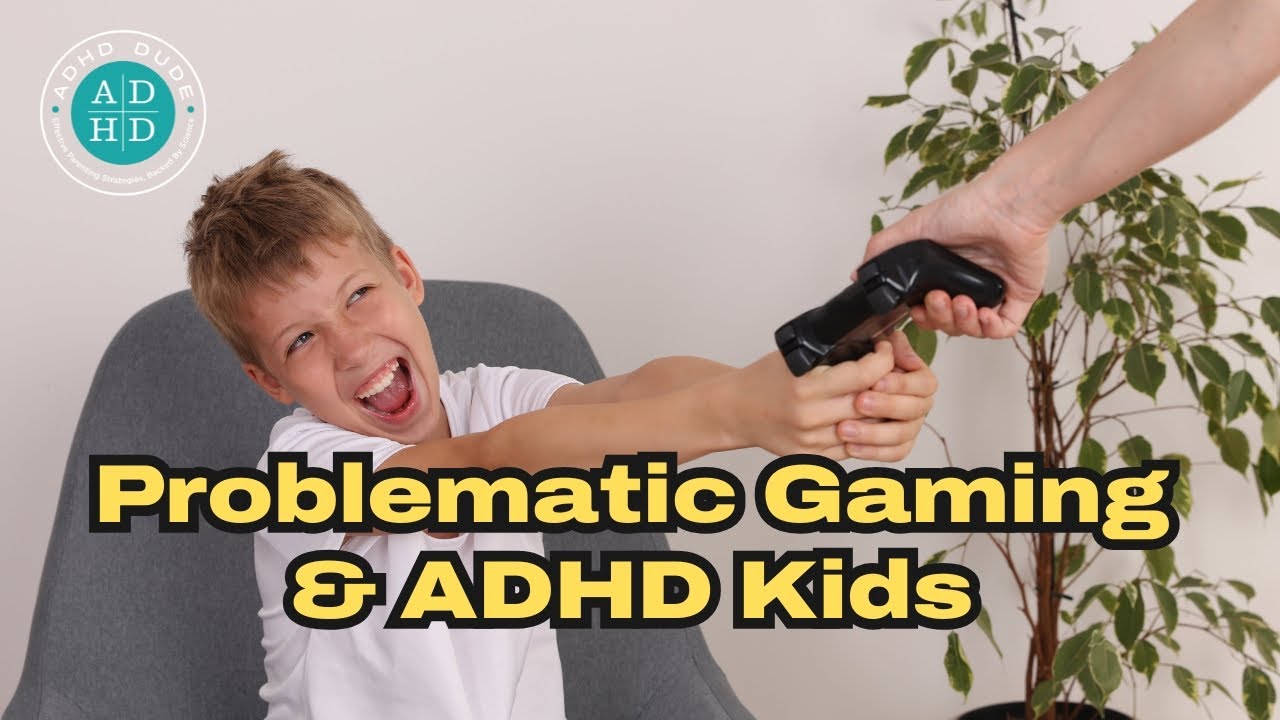Understanding Video Game Effects on Kids with ADHD
Video games aren’t inherently harmful for kids with ADHD — but without clear structure and healthy boundaries, gaming can quickly shift from a recreational activity to a source of significant behavioral and emotional dysregulation.
As someone who recently completed continuing education in the area of problematic gaming — and as a licensed clinician who specializes in ADHD — I want to share several key strategies that I teach inside the ADHD Dude Membership Site. These strategies are designed to help families create healthy gaming habits and prevent screen time from becoming a point of conflict.
Understand the Role of Screen Time
The American Academy of Pediatrics recommends a maximum of one hour of recreational screen time on school days and two hours on weekends. While many families exceed this limit (and often without issue), children with ADHD are more susceptible to emotional dysregulation — especially when screen time isn’t well-managed or consistently earned.
1. Video Games Should Be Earned — Not Expected
A foundational principle I teach parents is that video games should be treated as a privilege, not a right. They must be earned daily through meeting clearly defined expectations.
In the Creating Daily Expectations course within the ADHD Dude Membership Site, I outline how to structure expectations into two areas:
- Behavioral expectations (e.g., respectful language, emotional regulation, task completion)
- Household responsibilities (e.g., basic chores, personal organization)
These expectations should be realistic and developmentally appropriate. The goal is to help children experience success and build consistency.
It’s also important to understand that children with ADHD have a shorter “time horizon.” This means delayed rewards — such as, “If you do your homework all week, you can have gaming time on Friday” — are unlikely to be motivating. A more effective approach is to offer limited screen time on the same day that expectations are met.
2. Monitor Game Content Carefully
Knowing what your child is playing is essential. Not all games are created equally, and some may be inappropriate — particularly for younger children or those prone to emotional volatility.
For example, Minecraft tends to be developmentally appropriate and free from morally questionable content. Roblox, however, includes games with varying themes — some of which may be inappropriate depending on your child’s age and emotional maturity.
I often advise families to avoid games that include violence or morally ambiguous scenarios. In fact, a psychiatrist once shared with me that she was able to avoid increasing ADHD medication for certain children simply by removing violent video games from their routine. While some children are more sensitive than others, the potential impact on mood and behavior should not be overlooked.
3. Teach Transition Skills — Don’t Use Timers
Transitioning from a preferred activity, like gaming, to a non-preferred task can be extremely difficult for kids with ADHD. Traditional tools such as timers or five-minute warnings are not effective in teaching children how to internally monitor time or prepare for transitions.
Inside Executive Function Crash Course, I teach a strategy that focuses on making both time and upcoming transitions visible. This helps children anticipate what’s coming next and adjust their behavior accordingly.
I strongly recommend making this strategy a requirement: if your child consistently becomes dysregulated when it’s time to turn off the game, then using a visual transition strategy should be a condition of earning gaming time. If they refuse to use it, they don’t play. Simple as that.
4. Require Participation in Other Activities
It’s essential that children with ADHD have interests beyond video games. Ideally, this includes a structured activity — preferably one that involves physical movement — through school or a community program.
Many parents tell me, “My child isn’t interested in anything but video games,” or “We tried an activity, but they refused to go.” In those cases, it’s important to step into your parental authority. Participation in a non-gaming activity should be a required expectation, just like attending school or brushing teeth.
In my work with families, I’ve observed that when parents accommodate a child’s refusal to try new things, that inflexibility tends to intensify over time. Requiring involvement in outside activities helps your child build resilience, flexibility, and real-world social skills — all critical components of healthy development.
Why Timers and Countdown Tools Don’t Work
Many ADHD resources suggest using timers, red countdown clocks, or verbal warnings like “Five more minutes!” While these tools are well-intentioned, they fall short of teaching children how to sense the passage of time — a key executive function challenge for kids with ADHD.
Instead, children need to learn to recognize time through visual structure and predictable routines. This promotes independence and reduces emotional reactivity over time.
Final Thoughts
To be clear: video games are not directly the issue. But without proper strategies, consistent expectations, and limits on screen time, gaming can lead to avoidable behavior problems — especially in kids with ADHD.
To prevent that from happening:
- Establish daily expectations for earning gaming time
- Monitor the content of the games your child plays
- Require use of visual transition strategies
- Insist on participation in other structured activities
When you implement these strategies consistently, you’ll see healthier gaming habits, reduced conflict, and increased accountability — all of which are essential for long-term success.
---------------------------------------------------------------
Want to learn more?
Visit the Frequently Asked Questions page on adhddude.com for expert guidance on parenting strategies, executive function skills, and building structure that works for kids with ADHD.
Join Our Mailing List To Get Our Newsletter and Latest Updates
We will never SPAM.



